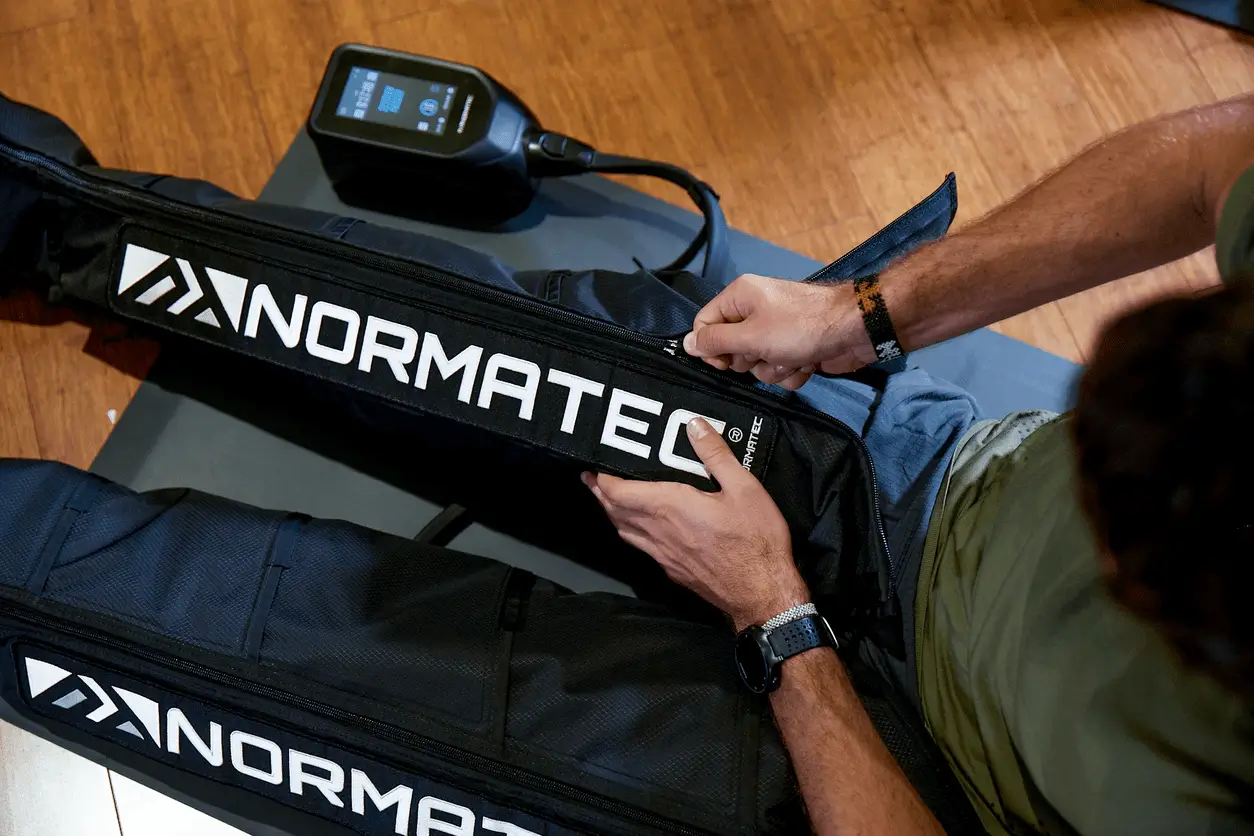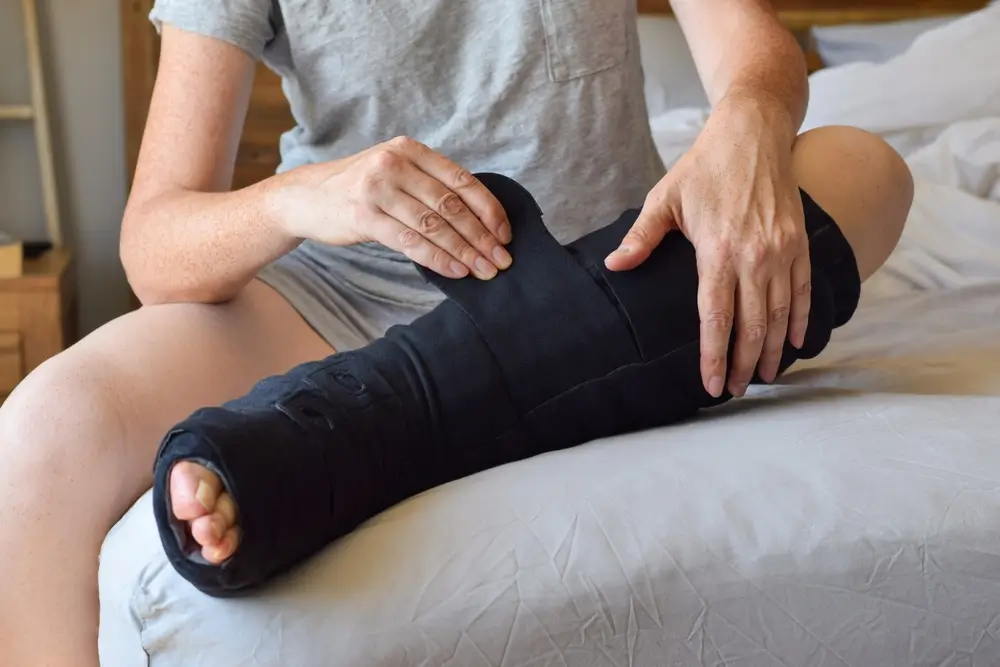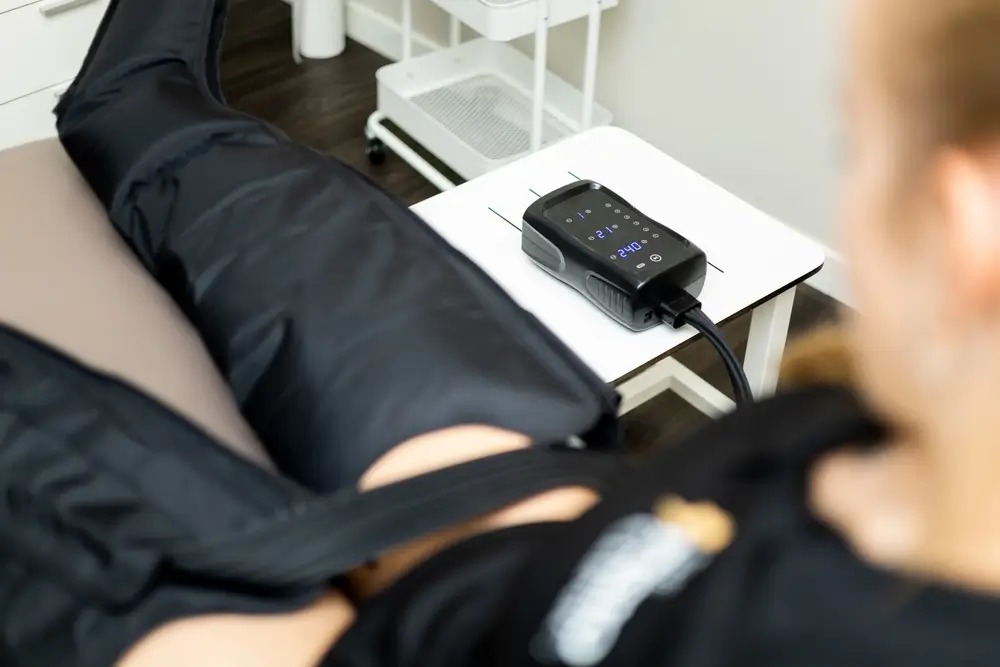In a world where health and wellness are of paramount importance, compression therapy stands out as an invaluable ally in combating a range of physical ailments.
This therapeutic method, characterized by its simplicity and effectiveness, has gained widespread recognition for providing substantive relief from various health issues.
Through this comprehensive guide, you’ll gain insightful knowledge about compression therapy, exploring its multifaceted types and identifying the groups that can reap its significant benefits.
What is Compression Therapy?
At its core, compression therapy is a medical intervention that employs controlled pressure to promote blood flow, minimize swelling, and alleviate discomfort in targeted areas of the body.
Serving as a time-honored remedy, this therapy has evolved to become a cornerstone in the management and treatment of numerous health conditions, boasting a broad spectrum of benefits that cater to a diverse patient demographic.

What Are The Types of Compression Therapy?
Going into the realm of compression therapy for legs reveals a variety of approaches, each tailored to meet specific therapeutic needs.
The three primary methods widely adopted in clinical settings include Compression Stockings, Bandages & Wraps, and Inflatable Devices. A closer examination of these types uncovers their unique characteristics and applications.
Compression Stockings
Engineered for both preventative and curative purposes, compression stockings are a go-to solution for managing venous disorders such as edema, phlebitis, and thrombosis. These specialized garments exert graduated pressure on the legs, enhancing venous return, and mitigating the risk of swelling.
Bandages & Wraps
Offering a more versatile and adjustable form of compression, bandages and wraps are particularly suited for addressing severe and acute conditions. Their flexible design allows for application on various body parts, enabling precise pressure distribution for optimal therapeutic effect.
Inflatable Devices
The domain of pneumatic compression therapy is where inflatable devices shine. By utilizing an air pump to intermittently inflate a wrap or boot, these devices create a rhythmic pressure that significantly aids in the treatment of conditions like lymphedema and deep vein thrombosis, promoting lymphatic and venous fluid movement.
Who Needs Compression Therapy?
The applicability of compression therapy spans a broad spectrum of individuals, ranging from those grappling with chronic illnesses to athletes seeking recovery solutions.
Patients with diabetes, varicose veins, DVT, and lymphedema find particular benefit from this therapy. Its utility extends to those leading sedentary lifestyles, offering a proactive measure to prevent circulatory issues.
Moreover, compression therapy serves as an essential postoperative intervention, aiding in clot prevention and expedited healing. Prior to embarking on a compression therapy journey, a consultation with a healthcare professional is essential to check its suitability and effectiveness for your specific health scenario.

Conditions That Can Be Improved With Compression Therapy
Compression therapy offers a non-invasive solution to a variety of health conditions, positively impacting the sufferers’ quality of life. Here are some conditions that can see marked improvement with compression therapy.
Lymphedema
A chronic condition, lymphedema results from a blocked lymphatic system leading to fluid retention and tissue swelling. Compression therapy aids in promoting lymphatic fluid flow, thus reducing swelling and discomfort associated with lymphedema.
Chronic Venous Insufficiency (CVI)
CVI is a condition where the leg veins do not allow blood to travel back to the heart. Compression therapy helps this condition by increasing blood velocity in the veins, improving venous pump function, and relieving symptoms of pain and swelling.
Deep Vein Thrombosis (DVT)
DVT is a serious condition characterized by the formation of clots in deep veins, primarily in the legs. Compression therapy can prevent clot formation and also helps in the treatment of post-thrombotic syndrome.
Leg Ulcers and Wounds
Compression therapy assists in healing leg ulcers and wounds by enhancing blood flow, which speeds up the healing process and reduces swelling and inflammation at the wound site.
Joint Pain
Compression therapy provides targeted relief from joint pain, which could result from various factors, including arthritis, inflammation, or injuries.
Post-exercise Recovery
Compression therapy can help athletes recover faster post-exercise by improving blood circulation, reducing muscle soreness, enhancing transfer of oxygen and nutrients to muscles.
Post-Surgical Blood-Clot Prevention
Compression therapy is often used post-surgery to prevent deep vein thrombosis, increasing the flow of blood which can be sluggish after surgery due to immobility.
Pregnancy
Compression therapy helps in achieving relief from swollen ankles and feet, a common concern during pregnancy, by improving blood flow and reducing fluid buildup.
Arthritis Pain
Compression therapy offers substantial relief to people suffering from arthritis by decreasing joint swelling and increasing mobility, improving overall quality of life.
How Does Compression Therapy Work?
Compression therapy works by applying pressure to specific areas of the body, typically the lower limbs.
This external pressure compresses the superficial veins, aiding fluid movement through narrower channels, thereby increasing the venous and lymphatic fluid velocity. As a result, it enables faster return of blood to the heart, reducing swelling and improving overall circulation.
What Are The Benefits of Compression Therapy?
Compression therapy comes packed with an array of benefits that contribute to enhancing one’s quality of life:
- Improved Circulation: By promoting the return of blood to the heart, it helps enhance overall circulation.
- Reduced Swelling: Effective in managing lymphedema and edema, it restricts fluid buildup and assists in reducing inflammation.
- Pain Alleviation: Through its pressure application mechanics, it aids in managing chronic pain associated with varicose veins, deep vein thrombosis, and arthritis.
- Enhanced Healing: Boosts the healing process of wounds and ulcers by promoting blood flow.
- Prevention of Venous Disorders: Regular use can help prevent the onset of venous disorders such as deep vein thrombosis.
- Post-exercise Recovery: Compression therapy aids athletes in recovery, reducing muscle soreness and fatigue post-exercise.
How Often Should You Use Compression Therapy?
The frequency of compression therapy depends on the specific condition it is being used to treat and the severity of that condition. For individuals living with chronic conditions like lymphedema or chronic venous insufficiency (CVI), daily use may be recommended.
Athletes looking for quicker post-exercise recovery might use compression therapy after strenuous workouts. It’s crucial to follow a healthcare professional’s advice on how often to use compression therapy, as personalized plans are often more effective and safer.

What Are The Advantages and Risks of Compression Therapy?
Advantages of Compression Therapy
The benefits of compression therapy are multifaceted, guiding users toward both physical and mental well-being. It significantly boosts circulation, ensuring that blood and lymphatic fluid move efficiently through the body, reducing swelling and enhancing the natural healing process. For athletes, it provides quicker recovery by minimizing muscle soreness.
Additionally, it’s instrumental in the preventive care of deep vein thrombosis, especially post-surgery or during long periods of inactivity. Its non-invasive nature also makes it a widely accessible option for individuals across various health spectrums.
Risks of Compression Therapy
Although compression therapy is generally safe, certain risks are associated with its use, particularly if incorrectly applied or used without medical supervision.
Improper use can lead to skin damage, worsened conditions, or discomfort. It’s important for individuals with pre-existing conditions such as peripheral neuropathy, dermatitis, or severe arterial diseases to consult healthcare providers before initiating therapy to avoid potential complications.
Is Compression Therapy Safe?
When used correctly and under appropriate circumstances, compression therapy is a safe treatment method.
Ensuring that the level of compression is suitable for the specific health condition it’s being used to treat is key. Safety also depends on using high-quality materials and equipment designed for compression therapy. Consultation with healthcare professionals further enhances safety, ensuring that any underlying conditions are considered.
Is Compression Therapy Right For Me?
Deciding if compression therapy is the right choice involves considering your current health status, your goals for therapy, and any potential risks. It’s most beneficial for those managing conditions like CVI, lymphedema, DVT, or looking for recovery solutions post-exercise or surgery.
If you’re pregnant, suffering from chronic pain, or seeking preventive measures against blood clot formation, compression therapy might be beneficial. However, consultation with a healthcare provider provides that your choice to pursue compression therapy is well-informed and tailored to your needs.
In conclusion, compression therapy presents a promising path to improved health and wellness, provided it’s applied correctly and judiciously.
For those pondering over the appropriateness of compression therapy for their health regime, places like Solcore Wellness emerge as beacons of guidance and professional support. Located in Cypress, TX, Solcore Wellness prides itself on offering a comprehensive suite of services designed to enrich the physical and mental well-being of our clients.
With a dedicated team of professionals, we see that each approach, including compression therapy, is personalized, reflecting our commitment to fostering optimal health in our community. Whether you’re navigating through chronic health conditions, seeking recovery solutions, or aspiring towards a healthier lifestyle, Solcore Wellness stands ready to support your journey towards achieving and maintaining peak wellness.

